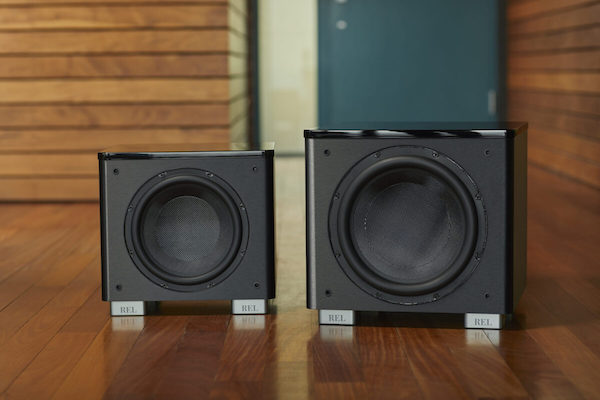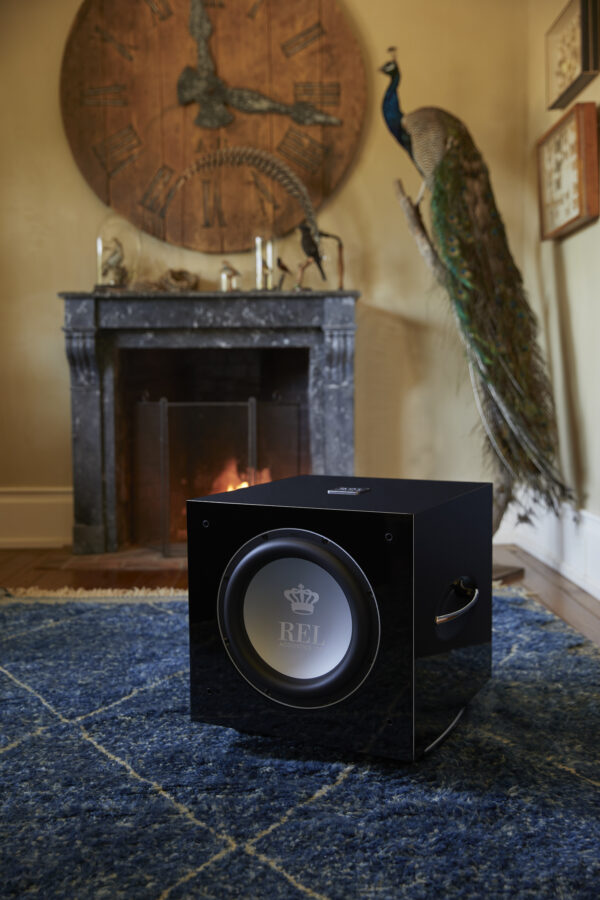Blog
Everything Is Everything
How Lessons From HT Apply to Serie S

At REL, we make it a point to try to learn something new every day. It keeps us fresh, hungry, and always looking for answers. And, while it’s advertising pablum to claim that one’s flagship offering is the sole driving engine for everything good that exists below, mostly that’s nonsense. If you’re a smart company, everything is about everything. Meaning that just as in life, where our children often teach us many of life’s greatest lessons, it can be our entry-level or most approachable offerings that teach us the most; and refresh our commitment to building the finest subwoofers on Planet Earth.
In the past five years, believe it or not, the Serie HT (for Home Theatre) range of products has forced us out of our comfort zone the most. When certain problems and challenges result in solutions, we look at improving the breed by applying more advanced versions of those solutions to much higher-end models. As folklore at MIT offers, the sole question on a freshman physics final many years ago asked simply “What is the Meaning of Life? Give Three Examples”. Here you go, three examples, 2 borrowed from HT and 1 from our Reference that have added goodness to REL’s Book of Life:
A
- Perfect Filters™: The challenge here was how to go about delivering exceptionally high-output ultra-low bass. First, build high-quality drivers. Check. Then provide them with a lot of power. Check (our 300W, 500W, and 1,000-watt amps are conservatively rated continuous power ratings). But, given how compact the cabinets needed to be, we needed something else to coax from the laws of physics the deep bass required for theatre effects. Our solution was the PerfectFilter, which was named because it perfectly resolved the problem we were facing on the engineering team. Left to its own devices, any driver in any box will have a downward-sloping output, meaning that as frequency goes down, mostly so does the output. We reasoned—with a bit of fine-tuning–that by building a simple analog inverse filter that would lift the output below a certain frequency, we would be able to countermand this behavior. Many experiments later, we had the perfect filter; one that did not appreciably slow down the impulse behavior of the subwoofer but made an enormously improved linear output in the subs behavior below around 40 Hz for the HT range.
- Shortly thereafter, we set about designing the latest range of Serie S (812,510) and we built a more advanced version of this filter that required less lift and came in lower in frequency. It’s this version of our PerfectFilter that’s responsible, in part, for the profoundly deep bass made by these remarkable bestsellers.
B.

Analog Turntable-Style Subsonic Filter: Ironically, it was the PerfectFilter adapted from the original HTs that forced us to borrow another analog filter from the world of phono cartridges. As some of you know, I was responsible for phono cartridge development and design for SUMIKO for over two decades. My first design was called the Blue Point and my last was the reference Palo Santos Presentation, still in production and still their reference. So, with the PerfectFilter-enabled HTs and our then-prototype Serie S producing stonking bass, we had a problem. Not quite a “Houston-we-have-a-problem” problem, but still a real challenge. The problem was simple: when you elevate the deepest bass your driver can handle, it doesn’t come with an owner’s manual telling it to stop trying to make bass all the way down to 0 Hz. And that makes it really easy to overload a subwoofer fitted with a PerfectFilter.
- Subsonic Filter: The solution allowed me to test a theory I had – one not acted upon for many years –subsonic filters to eliminate rumble on turntables, especially those in systems that were truly full range, like when one installs a REL into a system were incorrectly designed. For the entirety of my phono cartridge design career, folks designed subsonic filters that were active in the 15-30 Hz range. They got rid of the rumble but also lost huge amounts of what makes music special, thereby screwing up the sound all the way up into the lower midrange.
- For REL, we set about building two different versions, one for more affordable/standard models and the second for Serie S and the like. The Serie S starts filtering out at 5 Hz, and the standard subsonic for affordable models begins at 8 Hz. What this means practically speaking is that, just like RELs being married to speakers where one selects a filter frequency something like 1/3 of an octave BELOW where the speaker begins to roll out, we need to set the subsonic far below where we want to begin limiting infra bass. By setting it at 5 Hz for Serie S, it begins to have a meaningful effect by 10 Hz. Our standard version begins to have meaningful roll-off at 16 Hz. Both allow the subs to output everything they possibly can, then roll out the infra bass that can only produce damage to drivers.
C.
Centre Caps: Strictly speaking this one cuts in the other direction, meaning it started with the original G-1 way back in 2010 and has now worked its way back down the range. I speak of using a centre cap, separate from the cone, that can stiffen and quiet a driver.
On HT, we use affordable black fibreglass for the main cone, then use a pure carbon fibre centre cap to stiffen the whole cone so it can handle the pummeling a theatre woofer demands. For Serie T/x, we use aluminium for both the centre cap and cone. For S we use an entirely alloy cone, but use carbon behind it to damp the driver. And, for Reference models like our No.31 and 32, we use carbon/carbon for centre caps thereby keeping the mass as low as possible.
At REL, we’re open to learning from wherever the engineering challenges take us. If we can solve an issue, and then later identify it as an issue in other ranges of our product line as well, we won’t hesitate to apply these lesson elsewhere. And, we care not a whit about whether it’s learned in kindergarten or graduate school: lessons are lessons and solutions are solutions. We’ll apply everything we can to make our products the best they can be for our customers!
Thank you for reading our latest blog. We strive to provide content that’s both entertaining and educational.
If you have questions or suggestions for future articles, reach out to us at contactus@rel.net. We value your input and will do our best to respond within a few days.
With over 160 years of combined experience, we’re committed to making your audio experience exceptional. If you found value in this piece, please share it with friends who might benefit.











